Last updated on October 29th, 2022
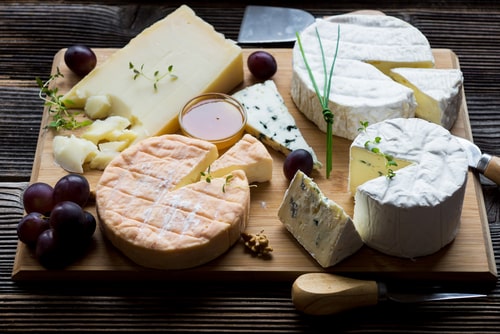
51. Cheese Lovers, say cheese: it is said that France produces more than 365 types of cheese. Thus, you could enjoy more than one type of cheese for many days during the year.
52. France is the world’s second-largest exporter of agricultural products.
53. Eating horse and rabbit is quite common in France. You can easily find these items on a restaurant’s menu.
54. The French consider wine an intellectual part of every meal.
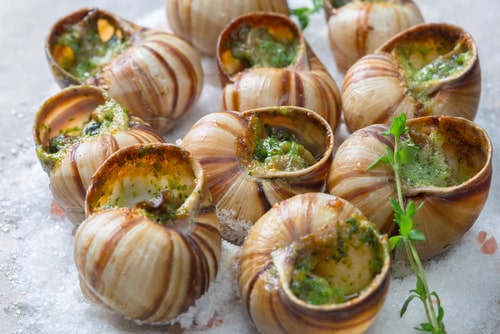
55. The French consume approximately 500 million snails every year.
56. Eating at McDonald’s in France would cost you double the amount if you were eating at McDonald’s in the U.S. The reason being the local sourcing of almost 90% of the ingredients in the U.S.

57. Mealtimes are valuable to the French. Most of the shop owners in France take a two-hour lunch break. They shut their shops mostly at 12 noon and reopen somewhere around 2 pm, or even 3 pm.
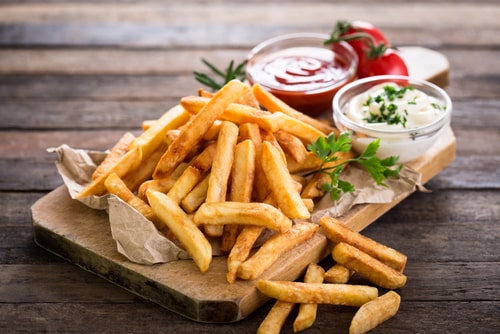
58. Another fun fact for kids about France is that French fries and French toast are not French inventions.
59. Paris alone has a whopping 5,000 restaurants.
60. Only 15% of women in France are obese, compared to 64% in the U.S. alone.
61. French is an official language in many countries including: Canada, Switzerland, Congo and Luxembourg. It is also the second-most commonly taught language after English, and is the mother tongue of more than 75-million people worldwide.
62. There are 49 UNESCO World Heritage Sites in France.
63. For more than 300 years, French was also the official language of England.
64. It is illegal to kiss while aboard a train in France.
65. All the trees in the French capital, Paris, are measured and referenced. There are 470,000 of them.
66. In the entire city of Paris there are 1784 bakeries.
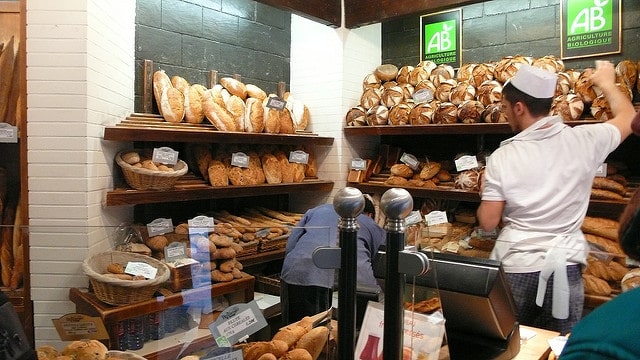
67. France also hosts one of the four Grand Slam tennis championships. The French Open is held every year in Paris.
68. Louis Pasteur was a French scientist who invented the process of pasteurization, to prevent microbial growth and preserve food items like milk.
69. Bordeaux, Burgundy, Champagne, Loire and Provence are the names of wine-producing regions in France.
70. Fact file of France remains incomplete until it is mentioned that wine is mostly free with every meal in France, and beer is considered a luxury.
71. The Channel Tunnel, which connects Kent in the U.K. with Coquelles in northern France, has the longest undersea portion of any tunnel in the world. It is 50.5 kilometers long. This tunnel carries passenger and freight trains, and has a speed limit of 160 kilometers per hour.
72. The concept for “jean” clothing was born in France. It was imported by Levi Strauss from the United States of America, with the initial need to build tough clothes for gold diggers.
73. In 1984, France had an internet network for people to shop and pay utility bills online. This was before the world started adopting the internet so much that it became a necessity for billions of people around the globe.
74. A man in Paris, Jim Haynes, has been inviting total strangers for dinner every week for the past 30 years. You can visit his website to book yourself a seat at an upcoming dinner party.
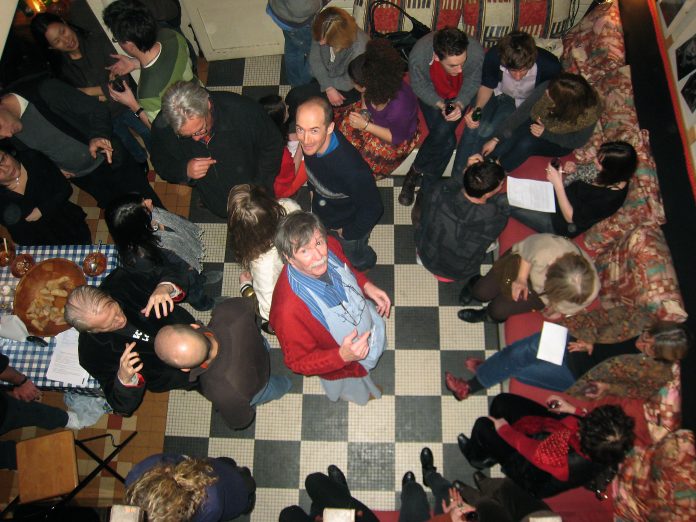
75. Kids, did you know that there are 1665 stairs in the Eiffel Tower in Paris? And until 1909, the tower was lit by gaslight?
76. In Paris, an apartment was left uninhabited by its renter for 70 years. When the renter died and the apartment was unlocked, a painting worth 2.1 million Euros was recovered.
Some random facts
77. France also has one of the highest wealth tax in Europe.
78. A fun fact: April Fool’s Day (1st of April) is believed to have originated in France.
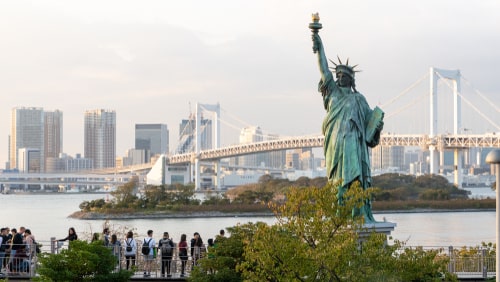
79. The Statue of Liberty was a gift from the people of France to the United States of America. It was built by Gustave Eiffel, the man who also constructed the Eiffel Tower.
80. Jean Nico, was a French diplomat for whom Nicotine is named. (Also, read some interesting facts about Cancer and Cigarettes)
81. The research concluded that at least thirty-four percent of the French population can speak English fluently.
82. The word “entrepreneur” was also invented by the French.
83. France won the Soccer World Cup in 1998. They also hosted the championships that year.

84. The French president Charles de Gaulle has survived 32 assassination attempts, the most in the world by anyone.
85. Henri Desgranges, a French journalist and cyclist, is the man behind the Tour de France – an annual, multiple-stage bicycle race. He started the race to promote his newspaper in 1903. Shame was brought to the well-known event when several teams were disqualified for doping in 1998, the same year France won the FIFA World Cup.
86. Before the introduction of the Euro, the French Franc was the official currency of France. The Franc was introduced by King John II in 1360.
87. To date, there are a total of 67 Nobel Prize winners from France. The first French national to win the prestigious award was Sully Prudhomme, who won the 1901 prize in Literature. They have the highest number of Nobel Prize winners in this category (literature).
88. The French kiss each other on the cheek as a form of greeting. However, it is illegal to kiss on railways in the country.
89. Frenchmen are considered to be image-conscious, which is why they do not like splitting the bill when they visit a restaurant with their friends. However, they like giving a fair share of theirs.
90. In France, it is illegal to take images of police officers or their vehicles, even in the background.
91. Between 8 AM and 8 PM, 70% of the music played on the radio in France has to be by French artists.
92. The shape of electrical outlets and the voltage in France both differ from that of those in the U.S. If you are visiting France, it might help not to over accommodate your luggage with much electrical or electronic stuff. However, there are a few notable exceptions in this category, and you also have an option to use a voltage converter.
93. A traditional French baguette is made up of only flour, yeast, and salt. 10 billion baguettes are baked each year in the country.
94. The French capital, Paris, is known as the “City of Light.” There are 296 illuminated sites in the city, consisting of bridges, churches, fountains, hotels and national buildings.
95. Every day at least two cookbooks are published in France.
About the flag of France
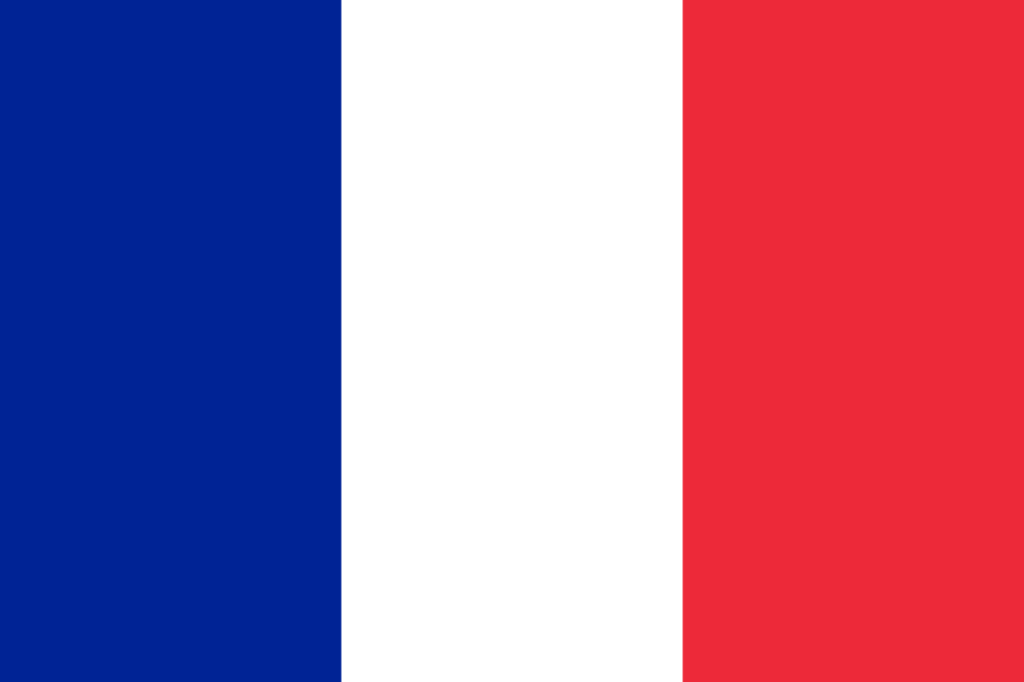
1. Design and Symbolism
The flag of France is a product of the French Revolution. It represents the principles that toppled the monarchy: liberté, égalité, fraternité. It is one of the most influential flags, with many countries adopting the design scheme in Europe and Africa.
The French flag is a tricolor with vertical blue, white, and red bands. The simple pattern diverges sharply from ornate royal standards and modern communist banners. The chosen hues are from the uniform of the National Guard, which mirrors the colors worn by the revolutionaries.
2. Adoption
France adopted the Tricolor as the national flag on February 15, 1794. Gilbert du Mortier and Jacques-Louis David are responsible for the design. General Mortier, also known as the Marquis de Lafayette, served in the American and French Revolutions. He is known as a hero of two worlds. Meanwhile, David was a neoclassical painter who shunned frivolity and embraced austerity. He was the leading artist of Western Europe in his time.
3. Technical Details
The flag dimensions have a ratio of 2:3. The stripes have equal width, except for the flag used in the French Navy, which follows a proportion of 30:33:37. The original uses a dark navy blue, while a new version introduced in the 1970s has a lighter shade of blue. Both are present in state buildings. The HEX values are 0055A4, FFFFFF, and EF4135.
4. History
The Early Middle Ages
Under the Capetians, the oriflamme served as the battle standard of the King of France. It was a blood-red flag with pointed ends that seemed like a flickering flame in the wind. During battles, a raised oriflamme meant that the army would take no prisoners, striking fear into the hearts of their enemies.
The Late Middle Ages
French royalty used flags featuring gold fleur-de-lis on white or blue backgrounds. This floral symbol represents the monarchy’s divine right to rule. It dates back to the first king to unite the Franks, Clovis I, who converted from Arianism to Catholicism. An old poem talks about the miraculous change of imagery on his shield from crescents to golden lilies. Some royal standards added the coat of arms at the center.
Le Tricolore
In the 1780s, widening inequality, rising unemployment, poor harvests, soaring food prices, high state debt, and regressive taxation led to social unrest. The king and the nobility resisted reforms, angering the people to the point of revolution. The monarchy gave way to democracy.
During the French Revolution, the Paris militia initially wore a blue and red cockade on their caps. These are the traditional colors of the city. General Gilbert du Motier added white, the ancient French color, to create the cockade of France. The National Guard wore it as part of their uniform. It became the basis of the Tricolor flag.
5. Other Flags
The Hundred Years’ War
The power struggle lasted from 1337 to 1453. The armies of England identified themselves with a red cross on a white field, while France used a white cross on a red or blue background. Blue later became the standard for French armies.
Joan of Arc
The patron saint of France also fought during the Hundred Years’ War. Her banner was a white field sprinkled with lilies and fringed with silk. It had an image of the world with an angel at each side and the words “JHESUS MARIA” written above. It inspired the use of white elements in the flags that followed.
France – country at a glance
| Capital City | Paris (48°51.4′N 2°21.05′E) |
|---|---|
| Largest City | Paris (48°51.4′N 2°21.05′E) |
| Area | total: 643,801 sq km ; 551,500 sq km (metropolitan France) land: 640,427 sq km ; 549,970 sq km (metropolitan France) water: 3,374 sq km ; 1,530 sq km (metropolitan France) note: the first numbers include the overseas regions of French Guiana, Guadeloupe, Martinique, Mayotte, and Reunion (slightly more than four times the size of Georgia; slightly less than the size of Texas) |
| Population | 66,675,085 (2025 est.) |
| Official Language | French |
| Borders | Andorra, Belgium, Germany, Italy, Luxembourg, Monaco (a principality), Spain, Switzerland. |
| Currency | Euro |
| Suffrage | 18 years of age; universal |
| Demonym | French |
| Religion | Roman Catholic |
| Government type | Unitary semi-presidential republic |
| President | Emmanuel Macron |
| Prime Minister | Sébastien Lecornu |
| Life expectancy at birth | 82.6 Years (2024) Life expectancy at birth indicates the number of years a newborn infant would live if prevailing patterns of mortality at the time of its birth were to stay the same throughout its life. |
| Climate | generally cool winters and mild summers, but mild winters and hot summers along the Mediterranean; occasional strong, cold, dry, north-to-northwesterly wind known as mistral (metropolitan France) |
| Terrain | mostly flat plains or gently rolling hills in north and west; remainder is mountainous, especially Pyrenees in south, Alps in east (metropolitan France) |
| Coastline | 4,853 km |
| Mean elevation | 375 m |
| Lowest point | Rhone River delta -2 m |
| Highest point | Mont Blanc 4,810 |
| National anthem | "La Marseillaise" (The Song of Marseille) |
| National colors | blue, white, red |
| National symbol | Gallic rooster, fleur-de-lis, Marianne (female personification) |
| Natural resources | coal, iron ore, bauxite, zinc, uranium, antimony, arsenic, potash, feldspar, fluorspar, gypsum, timber, arable land, fish (metropolitan France) |
| Agricultural land | 52.7% |
| Birth rate | 10.9 births/1,000 population (2024 est.) |
| Death rate | 10 deaths/1,000 population (2024 est.) |
| Sex ratio | 0.96 male(s)/female (2024 est.) |
| Industries | machinery, chemicals, automobiles, metallurgy, aircraft, electronics; textiles, food processing; tourism |
| GDP - per capita (PPP) | $55,200 (2023 est.) |
| Exports | $1.071 trillion (2024 est.) machinery and transportation equipment, aircraft, plastics, chemicals, pharmaceutical products, iron and steel, beverages |
| Imports | $1.074 trillion (2024 est.) machinery and equipment, vehicles, crude oil, aircraft, plastics, chemicals |
| Time Zone | CET (UTC+1) - Summer (DST) CEST (UTC+2) |
| Internet country code | .fr |
| Drives on the | Right |
| Calling Code | +33 |
| Table last updated | September 27, 2025 |
